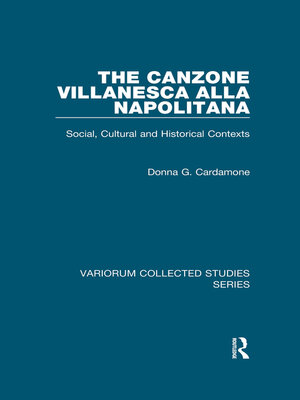The canzone villanesca alla napolitana
ebook ∣ Social, Cultural and Historical Contexts · Variorum Collected Studies
By Donna G. Cardamone

Sign up to save your library
With an OverDrive account, you can save your favorite libraries for at-a-glance information about availability. Find out more about OverDrive accounts.
Find this title in Libby, the library reading app by OverDrive.



Search for a digital library with this title
Title found at these libraries:
| Library Name | Distance |
|---|---|
| Loading... |
The printed debut of the canzone villanesca alla napolitana occurred on 24 October 1537, in Naples. Fifteen anonymous 'rustic songs' were published by Johannes de Colonia in a pocket-sized anthology with a cover featuring three women with hoes tilling the soil. The adjective villanesca (from villano or peasant) in the strict sense of the word means rustic or crude, but in this new context it also intimates that Neapolitan poet-musicians had been affected by the instinctive lyrical traditions of everyday people. The articles in this volume trace the Neapolitan origins of this song form, and its subsequent development as it spread quickly throughout Italy in a succession of editions published in Venice and Rome, providing a diverse repertory of lively songs to amuse the privileged that held and attended academies. Several studies focus on key figures in this process, notably Ferrante Sanseverino, Prince of Salerno, and Orlando di Lasso. At the same time the author relates these developments to the contemporary political context, notably the rivalry of Spain and France for control of the Kingdom of Naples.







